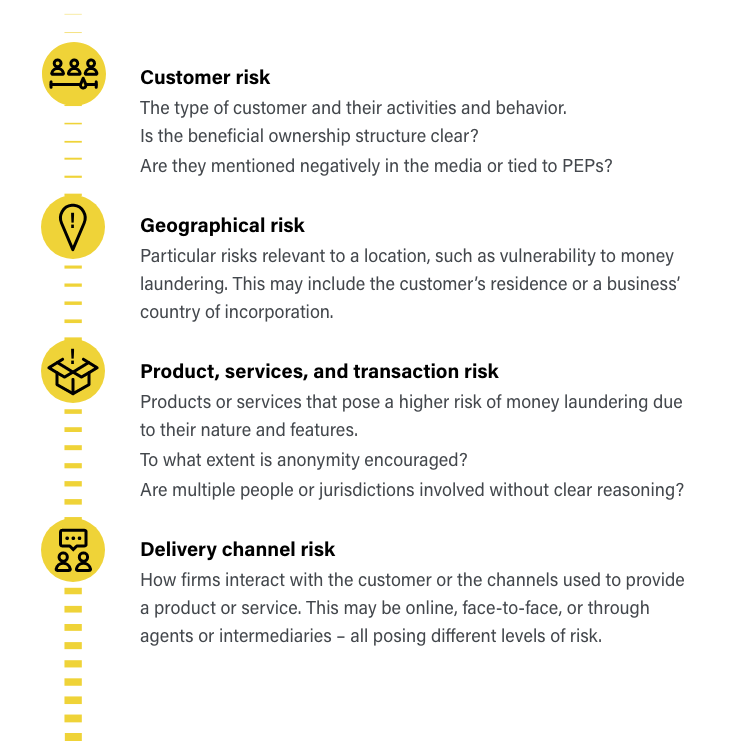Scale your business with a robust AML KYC solution
Automate customer onboarding and monitoring with a real-time AML risk database & an effective AML KYC solution.
Effective customer risk screeningA customer risk assessment is a necessity when onboarding new customers. It ensures that high-risk individuals are identified, and appropriate anti-money laundering (AML) measures are put in place.
But what elements should firms consider as part of an AML customer risk assessment? And how do they determine what to prioritize?
In order to understand the money laundering risks each customer poses, a customer risk assessment should consider a number of factors. These include verifying the identity of a customer, considering how to engage with them – the products and services they access, the type of transactions they carry out, and how often – and the geographical locations to which the customer is linked.
In addition, firms should ensure they comply with national and global sanctions by screening customer and beneficial owner names against United Nations and other relevant sanctions lists.
Firms will have different levels of risk appetite regarding the customers they are willing to work with. However, it is important that a consistent customer risk assessment methodology is implemented, setting out the criteria for customer risk scoring weighting mechanisms, and the rationale behind these.
The main purpose of the assessment is to identify the risks to which a firm may be exposed, either in the course of a business relationship, or for an occasional transaction. The more complex this interaction is, the more rigorous a customer risk assessment needs to be.
By being well informed, firms will be better placed to determine the correct level of customer due diligence (CDD). Ongoing reviews should be completed, particularly if a customer starts to act in a manner that deviates from their risk profile. The Financial Action Task Force (FATF) recommends that where firms cannot apply the appropriate level of CDD, they should not enter into the business relationship, or should terminate the business relationship.
There are four main pillars to consider in a customer risk assessment:

In the US, the Financial Crimes Enforcement Network’s (FinCEN) CDD Final Rule clarifies and strengthens customer due diligence requirements. It requires applicable financial institutions to establish and maintain written policies and procedures that are designed to:
Ongoing due diligence of customers is needed to help firms mitigate money laundering risk, but what is suspicious for one customer won’t be for another.
Some general behaviors that may raise a red flag, or prompt a re-evaluation of a customer risk assessment include:
Firms need to more accurately flag suspicious actors and activities. To do so, they need to understand the importance of dynamic risk assessments and have the data and technology to enable this.
Misclassification of low-risk customers as high risk, and inaccurate or insubstantial KYC information gathering, can dilute the effectiveness of AML measures – and a wholly manual and complex process may not be enough to guarantee the results needed.
Firms should consider simplifying the architecture of their risk models and introducing statistical analysis to complement expert judgment. Machine learning algorithms can improve the quality of data and help continuously update customer profiles, while considering behavior and additional factors.
Automate customer onboarding and monitoring with a real-time AML risk database & an effective AML KYC solution.
Effective customer risk screeningOriginally published 23 September 2022, updated 18 October 2024
Disclaimer: This is for general information only. The information presented does not constitute legal advice. ComplyAdvantage accepts no responsibility for any information contained herein and disclaims and excludes any liability in respect of the contents or for action taken based on this information.
Copyright © 2025 IVXS UK Limited (trading as ComplyAdvantage).